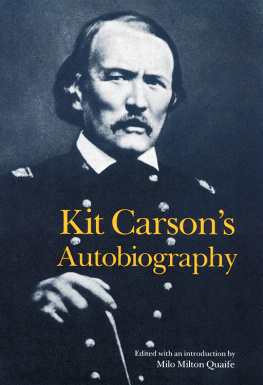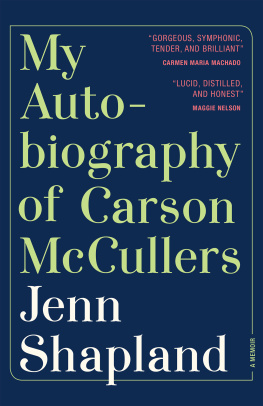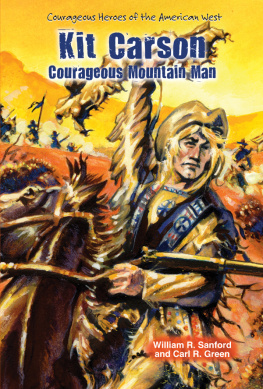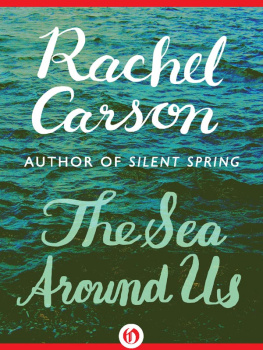
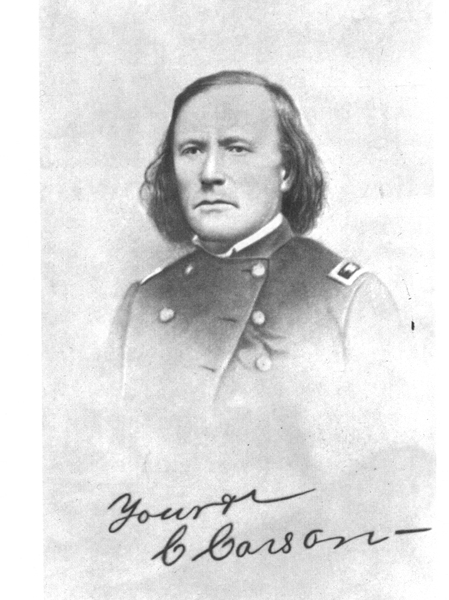
Kit Carsons Autobiography
EDITED BY
M ILO M ILTON Q UAIFE
UNIVERSITY OF NEBRASKA PRESS
Lincoln/London
The Bison Book edition of Kit Carsons Autobiography appeared as No. 33 in the Lakeside Classics, published in 1935, and is reprinted by arrangement with the Lakeside Press, R. R. Donnelley & Sons Co., Chicago, who are the sole proprietors of its special contents.
International Standard Book Number 0-8032-5031-2
ISBN-13: 978-0-8032-5031-4 (paper: alk. paper)
ISBN-13: 978-0-8032-5238-7 (electronic: e-pub)
ISBN-13: 978-0-8032-5239-4 (electronic: mobi)
Library of Congress Catalog Number 66-4130
Contents
Historical Introduction
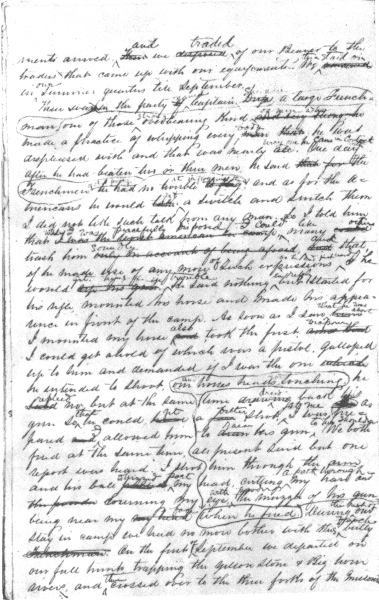
CARSONS STORY OF HIS FIGHT WITH SHUNAR
M ANY volumes of The Lakeside Classics Series have been devoted to narratives of trade and exploration in the trans-Mississippi West. If we include under this designation the Canadian Northwest, with the single exception of Mrs. Kinzies Wau Bun, from 1923 to the present time every issue has been devoted to this area. All of the volumes thus published have been reprints of earlier, and now rare or obscure books, and the reader who has preserved a complete set of The Lakeside Classics possesses a rather extensive library of the more important sources for the development of the American West.
In the world of the silver screen cycles come and go, but one type of picture, the western, flourishes perennially. Therein the observer can detect a great truth of American history. The mastery of the frontier is the great romance of America, and its story engages the deepest affections of our people. In this story two popular heroes stand preminent, Daniel Boone and Kit Carson. Other men may have been no less brave, and no less skilled in wilderness lore, but the popular fame of Boone and Carson as the outstanding frontier heroes of their respective generations is securely established.
Seldom, however, has a hero entered less auspiciously upon the pathway to fame and glory than Carson. Reared on the crude Missouri frontier, physically small and unimpressive, wholly without formal education, orphaned in childhood, and apprenticed to the prosaic craft of a leather worker, he began his western career by running away from his home and employer. The latter advertised the fact to the world by inserting this notice in the Missouri Intelligencer:
Notice is hereby given to all persons,
That Christopher Carson, a boy about 16 years old, small of his age, but thick-set; light hair, ran away from the subscriber, living in Franklin, Howard County, Missouri, to whom he had been bound to learn the saddlers trade, on or about the first of September last. He is supposed to have made his way to the upper part of the state. All persons are notified not to harbor, support, or assist said boy under the penalty of the law. One cent reward will be given to any person who will bring back the said boy.
Franklin, Oct. 6, 1826. D AVID W ORKMAN
Neither the penalty of the law, nor the inducement of one cent reward, however, deterred Charles Bentif, indeed, he ever saw the advertisementnoted merchant of the Santa F Trail, from harboring the tow-headed boy who thus made his first appearance upon the literary horizon; and in the humble rle of cavvy boy in Bents Santa F caravan, in the autumn of 1826, sixteen-year old Kit Carson embarked upon his notable career. Thirty years later, a postgraduate of the University of the Wilderness, and for a decade past a national hero, Carson was persuaded to appease the popular appetite for information about his career by dictating to a literate friend his own story of his life to date. Less than thirty thousand words in all, and characterized by a modesty which oftentimes tends to mislead through understatement, the simple autobiography thus produced became the basis of all subsequent lives of Carson. Yet until 1926 it remained unprinted, and until the present moment even the biographers of Carson have been ignorant of the circumstances under which it was produced. How, and why, these things came to pass, we shall endeavor to unfold.
The proverb about a hero being without honor in his own immediate neighborhood has no application to Carson. His fame was first established among his own mountain men, years before the outside world ever heard of him, and until the day of his death his neighbors, red and white, friendly and hostile, yielded ungrudging tribute to his remarkable qualities of character and leadership.
When, quite by chance, he encountered John C. Frmont in 1842 and diffidently offered to become his guide, he was so wholly unknown to the public that Frmont had to take time to investigate his references before venturing to engage him. The two men became firm friends, and each has expressed in unstinted terms his admiration for the other. Both men profited by the association, for if Frmonts success as Pathfinder of the Rockies was largely due to Carsons skill and guidance, Carsons introduction to the world outside the mountains was wholly owing to Frmont. That popular hero possessed journalistic talent of a high order, and his labors to acquaint the world with his achievements were ably seconded by his talented wife and his famous father-in-law, Senator Benton. Frmont suddenly dawned upon the public mind of the early forties, a veritable earthbound Lindbergh, and Kit Carson was his fidus Achates. On the floor of the United States Senate, in the public press, by word-of-mouth report and rumor, Carsons deeds were related and magnified. The paper-backs took him up, and before long a wholly imaginary superman had taken shape in the public mind, while the real hero, still in the prime of life and with half his career yet before him, was pursuing his unostentatious course of life in the remote American Southwest.
The popular interest in Carsons career was evidently discussed among his friends, and by them was discussed with him, and at length he entered upon the unwonted task of dictating his story. When it was finished, he signed with a legible hand (the extent, apparently, of his mastery of penmanship) his name to the concluding paragraph: The foregoing I hereby transfer to Mr. Jesse B. Turly to be used as he may deem proper for our joint benefit. The significance of this statement seems to have escaped his biographers heretofore, who to the extent that they have utilized the autobiography at all, have ascribed its production to his authorized biographer, Dr. De Witt C. Peters. The present Editor began his work imbued with the same idea, but in the course of his efforts to unravel the facts attendant upon the history of the autobiography, was compelled to abandon it.
To this history the attention of the reader may now be invited. Dr. Peters was an army surgeon who served in the Southwest for a time in the fifties and there made the acquaintance of Carson. In 1858 he published at New York The Life and Adventures of Kit Carson, the Nestor of the Rocky Mountains, from Facts Narrated by Himself, an octavo volume of 534 pages. The facts were, of course, taken from Carsons manuscript autobiography, which Peters, or his literary helper, expanded to five times the modest dimensions of the original. Carson formally certified that Peters was his only authorized biographer, and the accuracy of the recital was attested by three of his old-time Taos friends.
Next page
